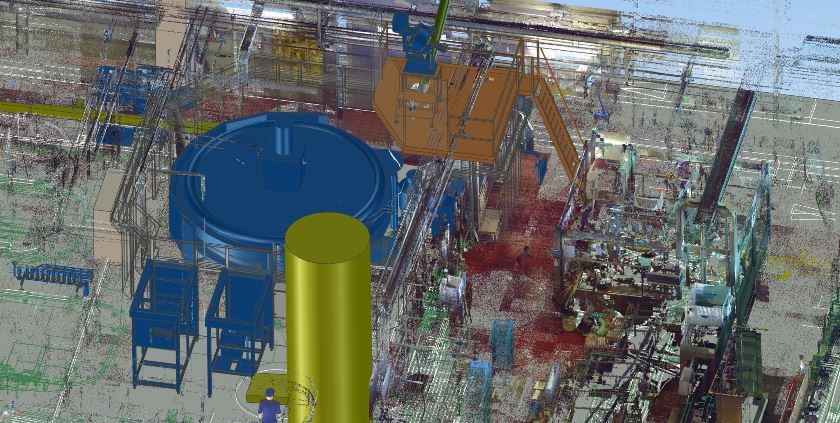Additional security of investment: thanks to the use of 3D software the KHS Group now provides a timely virtual overview of all newly procured technologies at the offer stage. With it, the systems provider can illustrate in detail and in advance how a client’s potential new line or single machine can be integrated into the production environment, taking all prevalent conditions on site into account. By making a full switch to the three-dimensional planning method, KHS is successively expanding its portfolio of reliable services.
Said Patrick Bürger, Head of Plant Design at KHS: “Depicting machinery in 3D helps customers to pinpoint any geometric interference during the early offer phase. This improves planning security, as any spatial conflicts in the production shop are recognised and corrected right from the start. Unnecessary loops in the planning process – and consequently additional costs – are thus avoided early on. We show customers how the line or machine fits into their existing environment. If required, we include the operators in the advance planning process and show them how they can later move around between the machines. Their feedback is of great value to us and enables us to devise an optimum layout.”
Moreover, the use of 3D models is also helpful to further processes. According to Bürger, customers are increasingly requesting rendered images for system visualization so that they can display and process live data from their MES on a production monitor.
Added Bürger: “This enables plant operators to track what’s happening where on the line in real time and to see how high the current output is, for instance. We can provide these images as an option. 3D data can also be used for the purpose of building information modeling (BIM). This describes a networked planning method in which all assets – from data on the building through piping and ventilation systems to the energy supply and ultimately the filling line – can be compiled and displayed in a single line design model. We have quite a bit of experience with BIM projects. We’ve had plenty of very positive response regarding the data quality here, for example. Our optional support program not only includes the provision of this data in various exchange formats but also enables plant operators to take part in regular BIM coordination meetings.”
Another advance 3D planning option is to use mobile VR goggles. These are particularly beneficial in confined spaces as it shows where and how operators can move from machine to machine.
Concluded Bürger: “VR simulation helps to provide simpler access to complex areas and to clearly visualise these. We’re hoping to find a number of prototype customers by the end of the year who we can test this form of visualisation within specific offer planning processes and present the benefits on the ‘live’ object.” For more visit khs.com/en/



